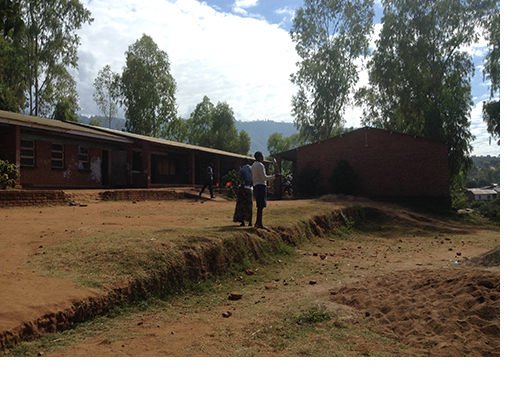アジア・アフリカ地域研究情報マガジン:メルマガ写真館

 第101回 「メルマガ写真館」
第101回 「メルマガ写真館」
「A Community Day Secondary School in Eastern Region – Malawi」
...Antonie Chigeda(Division of African Area Studies)
Following a government policy on free primary education in 1994, primary school enrolment in Malawi rose from around 1.7 million students to around 3.2 million. This expansion in enrolment created a significant pressure on the limited infrastructure to accommodate the growing numbers of students. A lot of students learned under trees, or shared classrooms when it rained.
Within a few years the expansion of enrolment at primary school soon led to an increased demand for spaces at secondary school level. The existing secondary school infrastructure could not absorb the pressure. In response, the government in 1998 declared former distance education centers scattered across the country into community day secondary schools as one way to increase access at secondary school level. However the quality of infrastructure and facilities available at most distance education centers now turned to full secondary schools remained of low standard compared to the existing conventional secondary schools compromising the quality of teaching and learning. Government and the local school communities have continued to make efforts to improve the conditions of these schools by building new classrooms and other teaching and learning facilities.
However in view of the fact that Community Day Secondary Schools outnumber conventional secondary schools in the country, and enroll more students than the combined enrolment of the conventional secondary schools, these schools remain the primary hope for secondary education to most students in Malawi. Thus improving the quality of these schools is likely to have a significant impact on the quality of secondary education in Malawi and improve the society.
マラウィ東部のコミュニティ・デイ・セカンダリー・スクール
...アントニー・チゲダ(アフリカ地域研究専攻)
1994年にマラウィでは初等教育が無償化され、その後、小学校の就学学生数は170万人から320万人にはねあがりました。この学生数急増にインフラの整備が追いつかず、多くの生徒が木の下の教室で勉強し、雨が降るといくつかの学級が教室を分け合って使うという状態でした。
小学校で起きたこの問題は数年のうちに中高等学校でも起きるようになりましたが、中高等学校の設備はまったく足りませんでした。そこで1998年に政府は、全国各地にちらばっていた遠隔教育センター(ディスタンス・エデュケーション・センター)というインフォーマルな教育施設をコミュニティ・デイ・セカンダリー・スクール(コミュニティの「(全寮制でない)通い」の中高等学校)にすると宣言しました。しかし、学校設備としては従来の中高等学校のレベルにはなかなかおよびません。政府とそれぞれのコミュニティは、その後も新たに校舎を建設して教室などの教育環境を整える努力を続けています(写真の校庭には砂が盛ってありますが、ここに新たな校舎ができる予定です)。
そして、実際には、コミュニティ・デイ・スクールの数が、もともとある中学の数をはるかにしのいでいて、そこで学ぶ学生の数も多くなっています。ですから、多くの中学入学希望者にとって、このコミュニティ・デイ・スクールで学ぶことが第一の希望となっている現実があるのです。コミュニティ・デイ・スクールをよいものにすることは、マラウィの中高等教育の質の向上につながり、ひいては社会全体をよくすることになりそうです。
